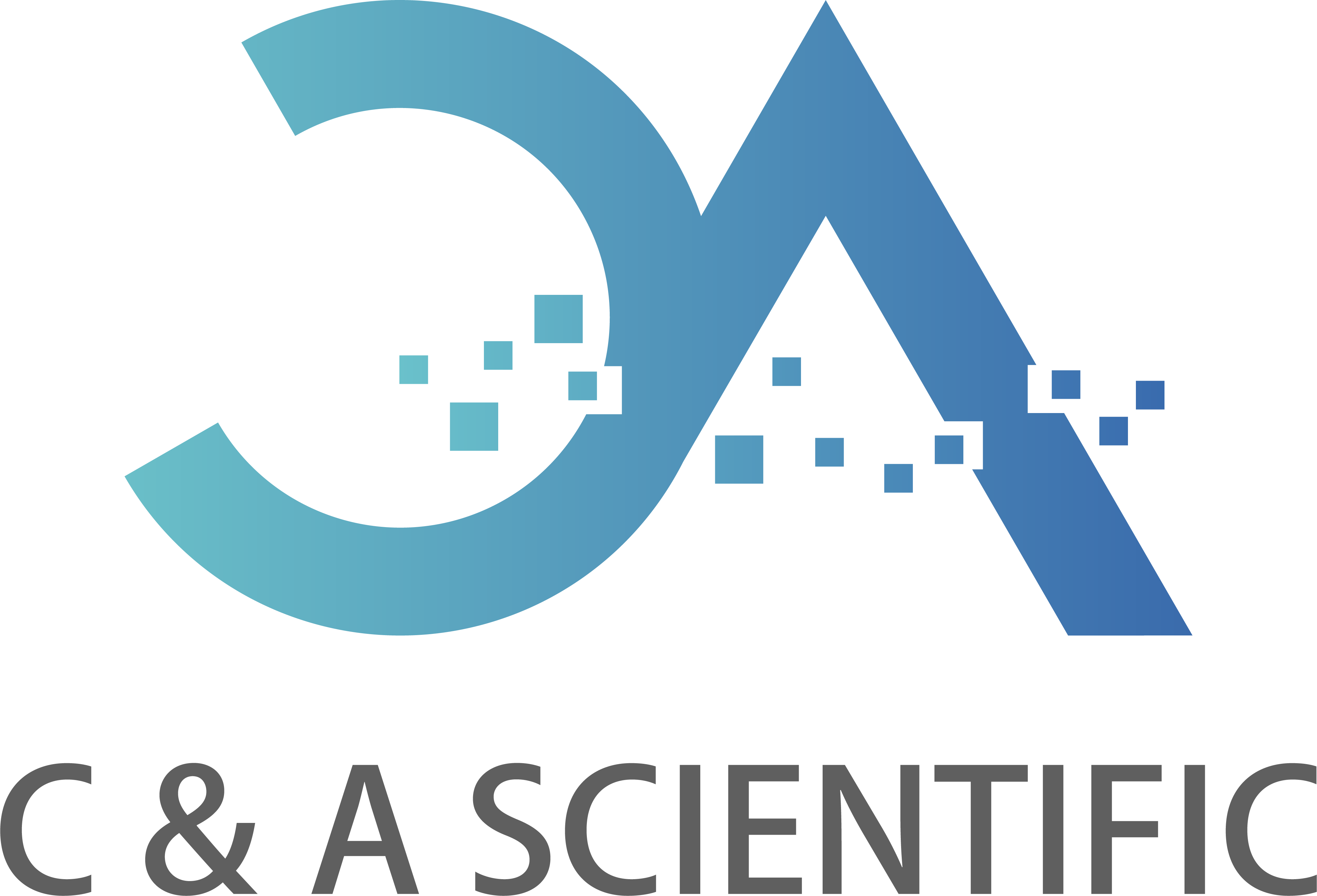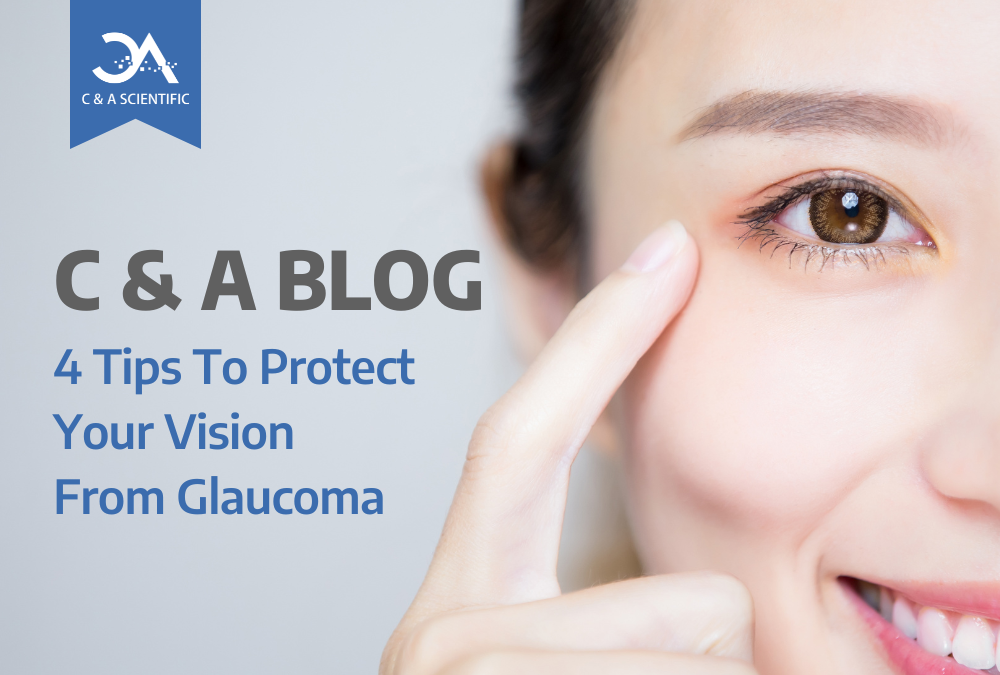
Glaucoma is a leading cause of vision loss. Worldwide, over 80 million people are affected by the disease. By 2040, this number will increase by 30 million.
Are you at risk of developing glaucoma? Read this article to learn more about how to protect your vision today!
Table of Contents
- Glaucoma Definition
- Types of Glaucoma
- Angle-Closure
- Open-Angle
- Normal Tension
- Who’s at Risk?
- Diagnosis Tests
- Glaucoma Prevention
- Glaucoma Treatment
- Resources
Glaucoma Definition
Glaucoma is a common disease that attacks the optic nerve. The optic nerve sits at the back of your eye and sends signals to your brain, allowing you to see. When fluid builds up and causes pressure, the optic nerve becomes damaged.

The optic nerve consists of microscopic nerve fibers. When a nerve fiber dies, blind spots will occur in your vision. If all the nerve fibers die, vision loss or blindness will occur.
Types of Glaucoma
According to the CDC, around 3 million Americans suffer from glaucoma. Glaucoma has no cure and, often, no warning signs. More than half of the people living with the disease are unaware that they have it.
Angle-Closure
Angle-closure can occur slowly over time or suddenly. A blockage of the drainage canals causes this type of glaucoma.
Common symptoms of angle-closure include the following:
- Nausea
- Low or blurry vision
- Red eye
- Pain in and around the eye
- Headache
- Vomiting
- Experiencing halos or rainbows

If you experience any severe symptoms, consult an ophthalmologist immediately.
Open-Angle
The standard type of glaucoma is open-angle, which occurs when the filter in the drainage canals is damaged. Since open-angle occurs quickly and without warning, there are no early signs or symptoms.
Those with open-angle may experience the following:
- Blind spots in peripheral vision
- Blurry central vision
Although open-angle develops suddenly, you can schedule regular eye exams with your doctor to catch the disease before it’s too late.
Normal Tension
Normal tension is a type of glaucoma that occurs without intense eye pressure.
Like angle-closure and open-angle, there are no early stages to normal tension.
Normal tension causes blurry vision and peripheral vision loss.
Who’s at Risk
The most common risk factor is increased pressure in the eye. However, people of specific age groups and races are more prone to glaucoma, such as those over 40 and of Asian, Hispanic, or African heritage.
Other high-risk individuals include those with:
- Diabetes or high blood pressure
- Eye injuries
- Family with a history of vision loss
- Thin corneas or optic nerves
If you think you are at high risk, speak to an ophthalmologist today to receive an extensive eye exam.

Diagnosis Tests
When visiting an ophthalmologist, they will run a complete exam. Only testing for eye pressure is not enough to diagnose the disease, especially since those with normal tension glaucoma do not experience as much pain.
The test will consist of tests for peripheral vision, cornea thickness, eye pressure, eye drainage angle, and optic nerve damage.
Your ophthalmologist can talk to you about taking preventative measures to avoid visual impairment.
Glaucoma Prevention
Talk to your family about their health history to determine if you are at genetic risk. Protect yourself from vision loss by receiving frequent dilated eye examinations.
Staying healthy, exercising, and controlling your blood pressure are three natural tips to help prevent vision loss.

Learn more about how to stay healthy by reading C & A Scientific’s “Break Habits- Get Healthy with 3 New Year’s Tips” blog post.
If you have been diagnosed with glaucoma, avoid high trans fats. High trans fats can cause further issues for the optic nerve. Hydrogenated oils, fried foods, and red meats are also known to worsen symptoms.
Although there is no cure, early treatment can prevent vision damage.
Glaucoma Treatment
Receive eye drop prescriptions to help stop the development of glaucoma. Other forms of treatment include oral medicine or surgery.

Some doctors may recommend a laser procedure to lessen pressure behind the eyes.
Listen to your doctor and follow their instructions for medical use and treatment. Tell them if you experience any adverse side effects or your eyesight worsens.
Look at our list of resources to learn more about glaucoma and how to prevent blindness today.
Resources
January is Glaucoma Awareness month. Get community involvement online and hear testimonials from those with the disease.
Watch the National Eye Institute’s videos on Youtube here. Learn more about dilated eye exams and how to protect yourself from vision loss.
For more information and resources, download this guide from the National Eye Institute to learn what questions you should ask your doctor.
C & A Scientific is a dedicated leader in improving the health and minds of people worldwide. We supply over 700 award-winning medical and STEM-inspired products to distributors and retailers looking for sensational customer service. Learn more about us and our story here.

